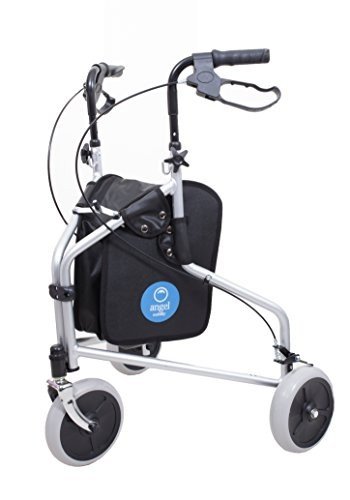Mobility Scooters: A Comprehensive Guide
Mobility scooters have actually become a necessary mode of transportation for numerous individuals dealing with mobility challenges. This post explores the various aspects of mobility scooters, including their types, advantages, features, and a guide for potential purchasers.
Comprehending Mobility Scooters
Mobility scooters are electrically powered devices created for people with limited mobility. They offer a method of transport for individuals who might have difficulty strolling but still wish to retain their self-reliance. They are available in different styles and features to accommodate a large range of needs.
Types of Mobility Scooters
Mobility scooters can generally be classified into three main types:
| Type | Description | Best For |
|---|---|---|
| Compact Scooters | These are small and lightweight, ideal for indoors and short journeys. | Users with minimal storage area or those who travel frequently. |
| Mid-size Scooters | A balance between portability and stability, ideal for both indoor and outside usage. | Those who require to cover a variety of surfaces. |
| Heavy-duty Scooters | Large and robust, created for rugged outside use and much heavier people. | Users requiring extra weight capacity or going off-road. |
Key Features of Mobility Scooters
The option of mobility scooter typically depends on the functions that align with individual needs. Here are some of the key features to think about:
- Weight Capacity: Mobility scooters include various weight limitations. It is crucial to pick a scooter that can effectively support the user's weight.
- Range: The distance a scooter can travel on a single charge varies. Depending upon mobility scooters near me , one might select scooters with a variety of as much as 40 miles.
- Speed: Most mobility scooters can reach speeds between 4 to 8 miles per hour. Consider what speed is comfortable and safe for the designated environment.
- Turning Radius: A compact turning radius is necessary for indoor usage, permitting much easier navigation in tight areas.
- Battery Type: The type of batteries utilized can affect the scooter's performance. Lead-acid and lithium-ion batteries are the most common.
Benefits of Using Mobility Scooters
The advantages of mobility scooters extend beyond simply transport. Some key benefits include:
- Independence: Users can navigate their environment without depending on caregivers, promoting independence and self-confidence.
- Health Benefits: Using a scooter can encourage outdoor activity, causing physical and psychological health improvements by lowering feelings of seclusion.
- Convenience: Scooters can easily be operated in numerous environments, whether indoors, in shopping center, or outdoors.
Essential Considerations When Buying a Mobility Scooter
When purchasing a mobility scooter, a number of considerations can assist guarantee that you choose the best model:
Assess Individual Needs:
- Mobility level: Consider how much help the individual will need.
- Range of usage: Determine where the scooter will mostly be utilized (inside, outdoors, on rough surfaces, and so on).
Test Drive:
- Always test drive several models to discover a suitable fit. Focus on convenience, ease of steering, and the scooter's responsiveness.
Evaluation Safety Features:
- Look for scooters with appropriate safety features like lights, indicators, and anti-tip designs.
Examine Warranty and Service Options:
- A dependable guarantee and readily available service choices are essential for long-lasting use.
Frequently Asked Questions about Mobility Scooters
1. How fast do mobility scooters go?Mobility scooters normally have speeds varying from 4 to 8 mph, with many created for safety rather than high-speed travel. 2. Exist weight constraints on mobility scooters?Yes, mobility
scooters come with particular weight limits, often varying from
250 lbs to over 500 lbs, depending upon the model. 3. Can mobility scooters be utilized indoors?Certain designs, especially compact scooters, are specifically designed for
indoor use and are easier to navigate in tight spaces. 4. How often do the batteries need to be replaced?Battery life can vary based on use, however typically, with correct care, batteries might last in between 1 to 3 years before needing replacement
. 5. Are mobility scooters covered by insurance?Coverage can differ, but some insurance plans, including Medicare and Medicaid, might cover part of the cost. It's suggested to contact specific insurance coverage companies. Mobility scooters function as a
important tool for numerous individuals, allowing them to preserve
their flexibility and independence. By comprehending the various types and features of mobility scooters, individuals can make educated decisions tailored to their particular requirements.
Whether used for errands, interacting socially, or leisurely activities, mobility scooters can enhance the quality of life for those with mobility constraints. Investing in a mobility scooter is a choice that can significantly impact a person's every day life. Therefore, individuals should carefully evaluate their options and pick a model that best aligns with their lifestyle and mobility requirements
.

